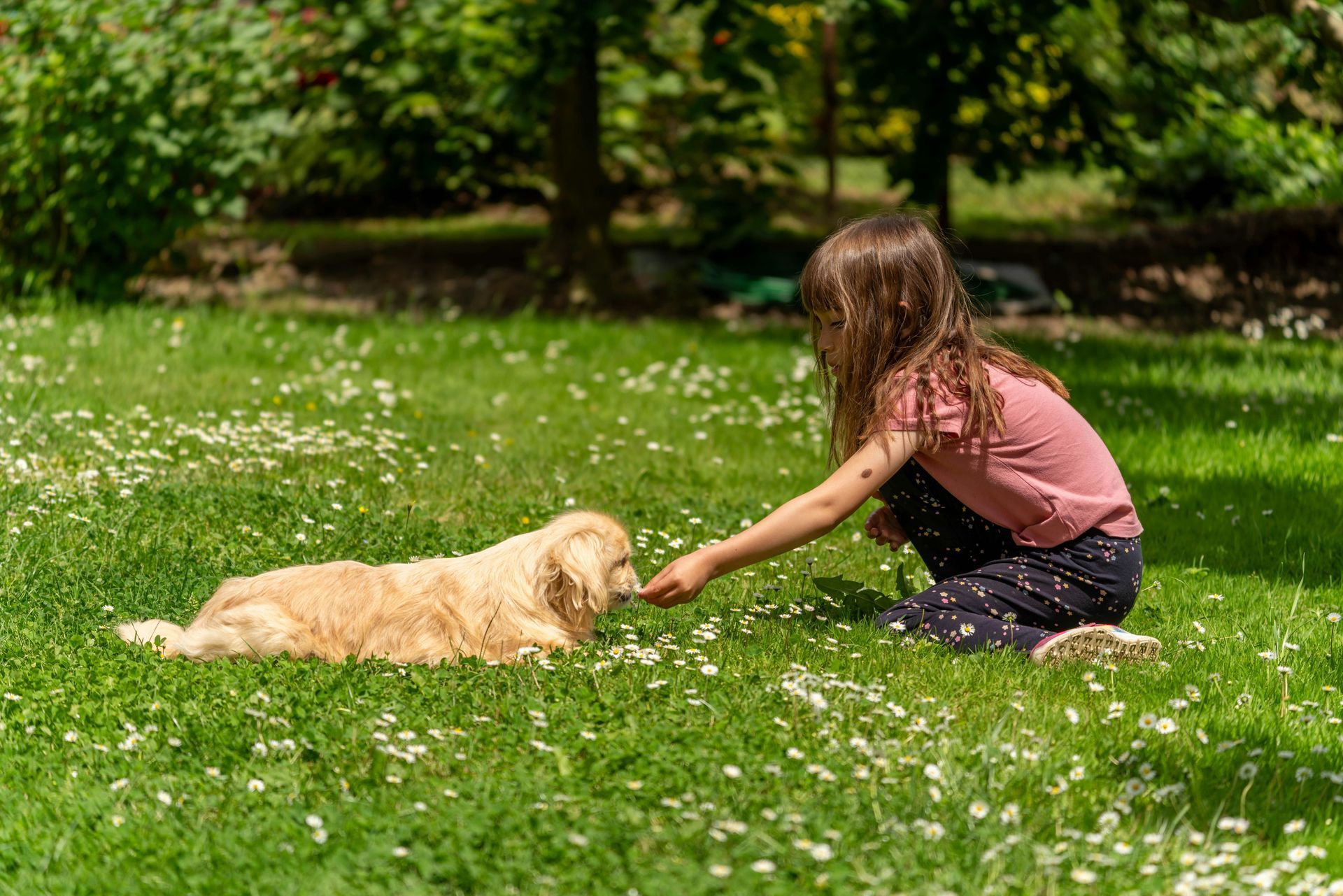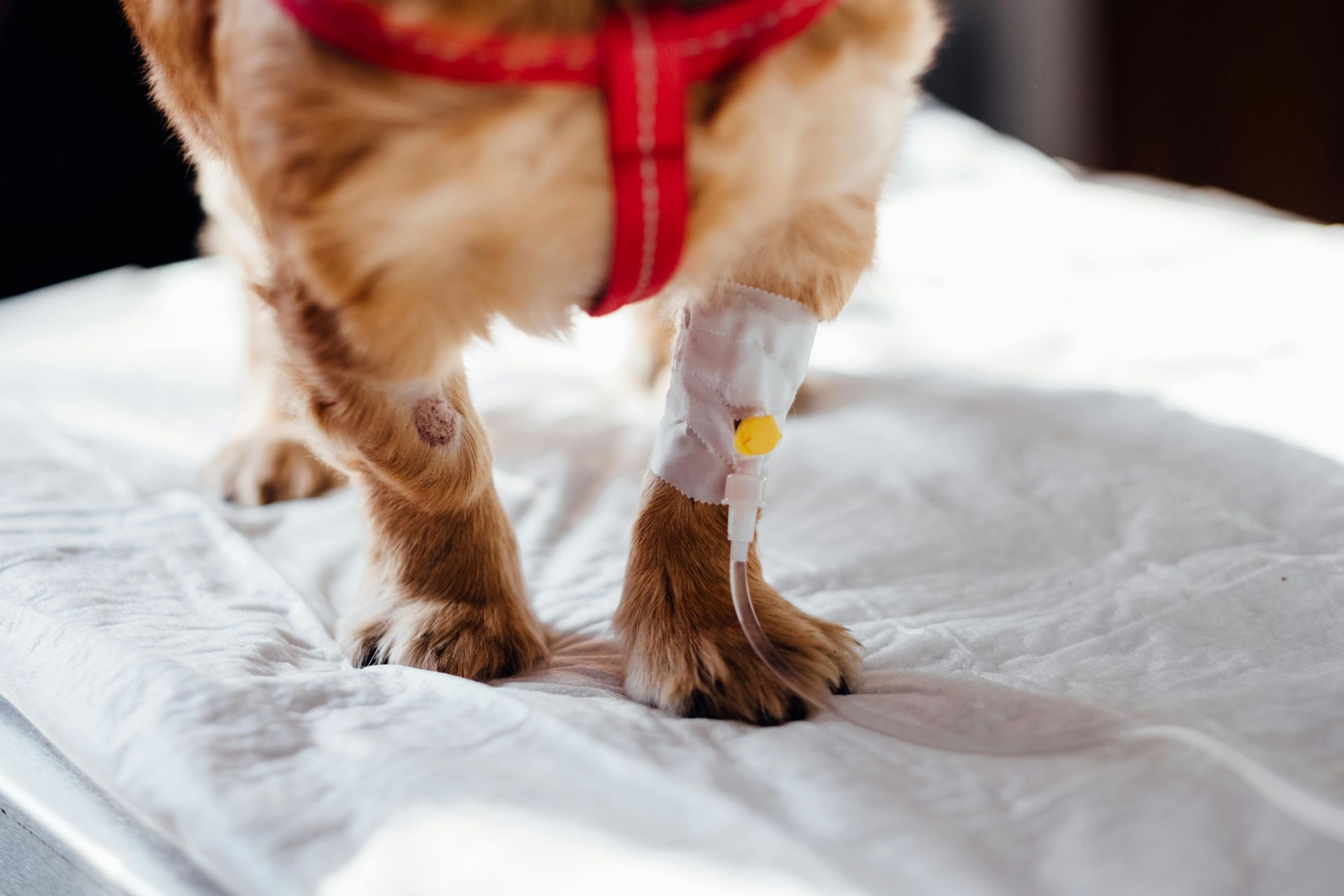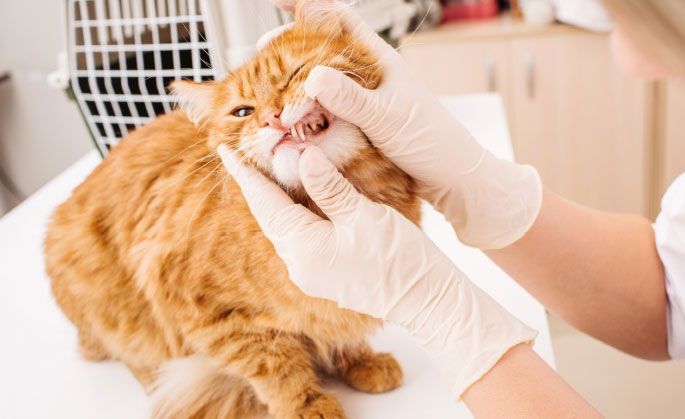How do I...?
Collect a urine sample?
Brush my dog's teeth?
Brushing your pet's teeth is considered the gold standard for maintaining healthy teeth. This handout will help you to teach your dog to cooperate during brushing.
When recommending tooth brushing, there are 3 strict requirements:
- A cooperative pet.
- A motivated pet owner.
- A pet owner who is confident to perform the task.
Step 1: Acclimating your dog to mouth handling.
- Start at an early age.
- Get your pet used to you gently touching its muzzle and jaw.
- Follow with a treat reward and lots of praise.
Step 2: Simulating brushing with your finger.
- Wrap soft gauze around your finger or wear a finger brush.
- Place a little dog toothpaste on your finger - it is important to only use a pet-approved product.
- Let your dog lick the toothpaste from your hand.
- Do these several days in a row.
- Follow it with a reward and praise.
- As the pet gets comfortable, extend the finger down the sides of the mouth.
Step 3: Introducing the toothbrush.
- Place the dog toothpaste on a soft pet toothbrush.
- Allow your pet to lick it from the brush.
- Gently rub the front teeth in a circular motion.
- Praise and reward your dog.
- Repeat step for several days.
Step 4: Brushing your dog's teeth.
- Gently hold back your pet’s lips.
- Brush the outside of each tooth, moving the brush gently in a circular motion with the brush at a 45-degree angle.
- Talk to your dog in a soothing voice & always following sessions with treats.
- Brush a few teeth the 1st time and gradually lengthen each session.
- Concentrate on the area when the gum meets the tooth.
- Ideally, you should try to brush your pet's teeth every day. If time does not permit, try to commit to at least twice a week with the addition of other forms of dental homecare such as dental chews or chew toys throughout the week.
Pill my dog?
Apply eye drops?
Record sleeping or resting breathing rate?
Look after my pet after surgery?
Check my pets bandage?
Care for my pet after orthopaedic surgery?

October 30, 2024
It is essential to protect your puppy against the major infectious diseases. Puppies require a course of three injections at: 6 weeks – distemper, hepatitis, parvovirus; 8 weeks – distemper, hepatitis, parvovirus; 10 weeks – distemper, hepatitis, parvovirus and canine cough, then a vaccination annually/triennially for life.

October 30, 2024
Desexing or neutering your pet is a surgical procedure that prevents them from being able to reproduce. In male pets it is commonly referred to as “castration”, and in female pets as “speying”. This is the most frequent surgery performed by our vets, and generally your pet is home by the evening of surgery.

October 27, 2024
The most common ticks infesting dogs in Australia are the paralysis tick, the brown dog tick, and the bush tick. Ticks are becoming more prevalent in the local area due to the movement of wild animals and development occurring in the area. We have a wide range of preventative options in clinic to prevent paralysis ticks such as monthly Simparica or Bravecto which can be given every 3 months as an oral chew or every 6 months as a spot on.








